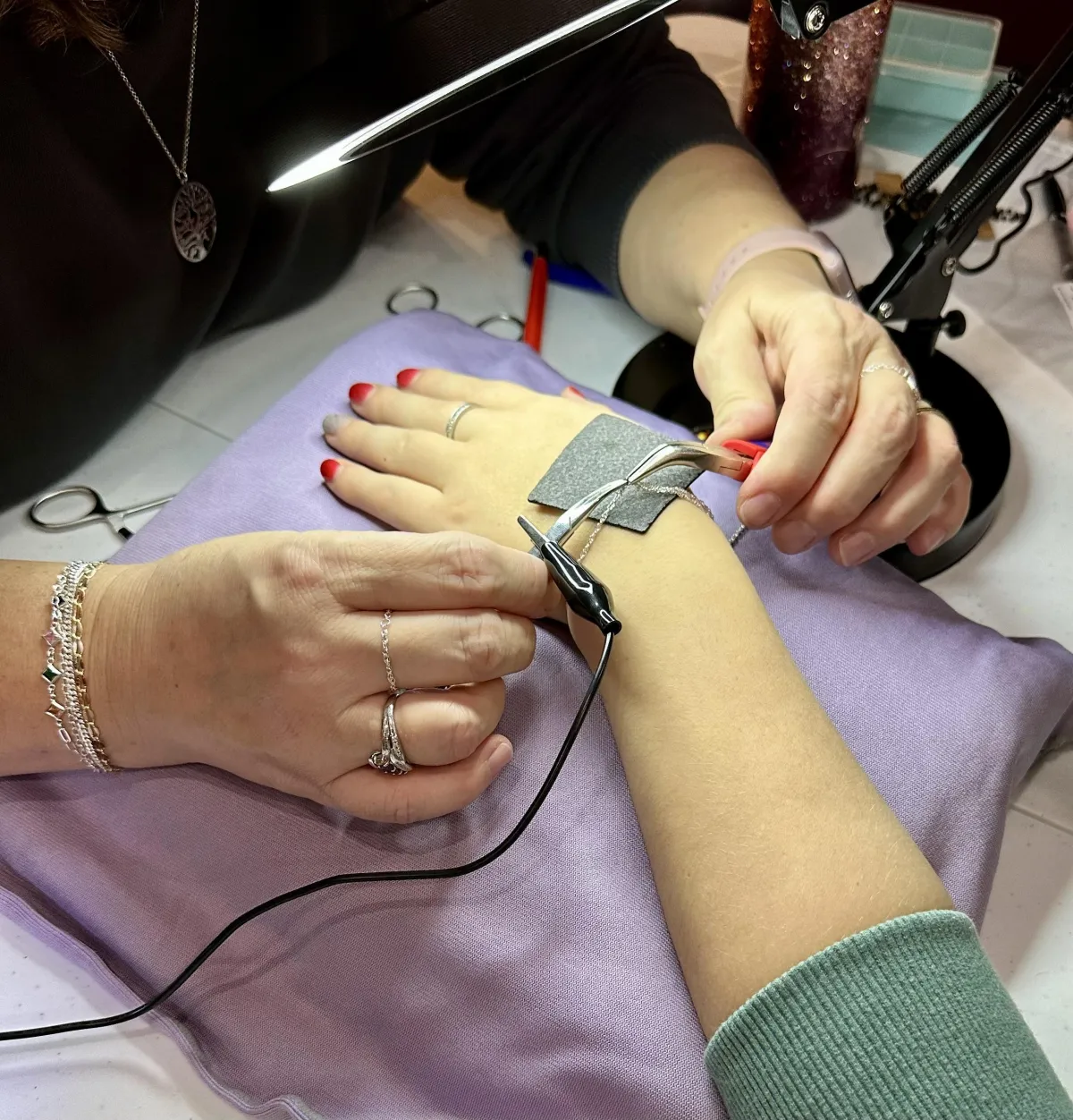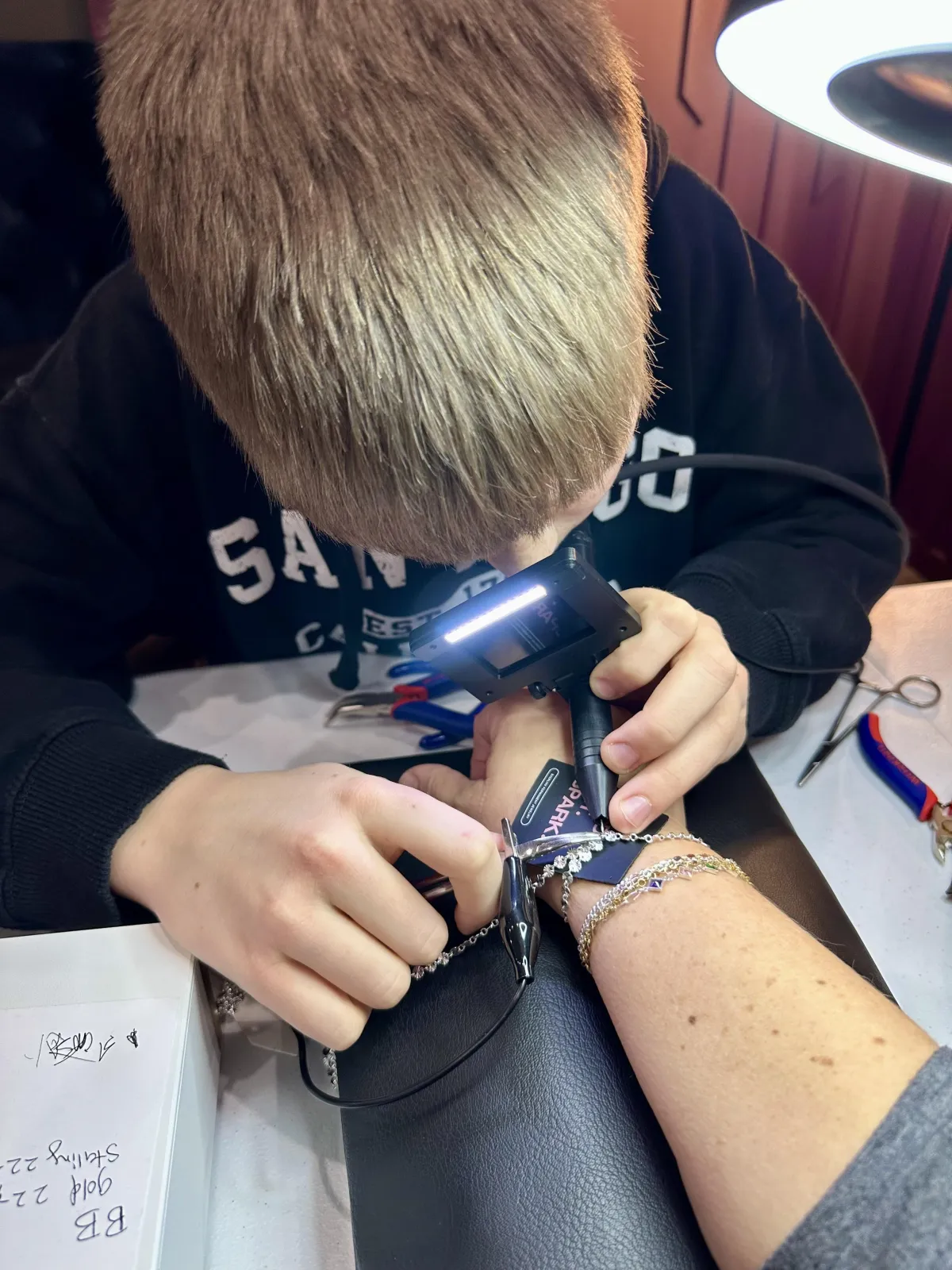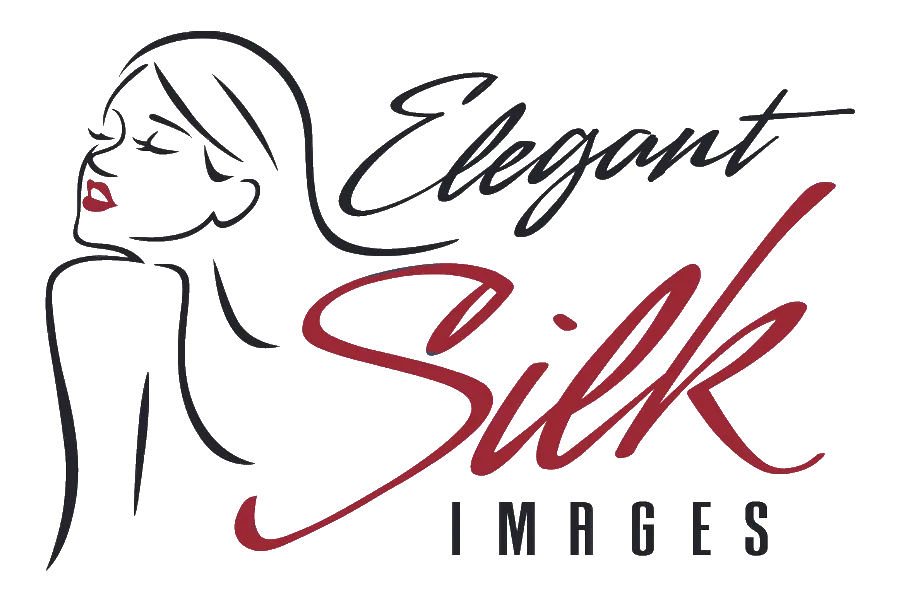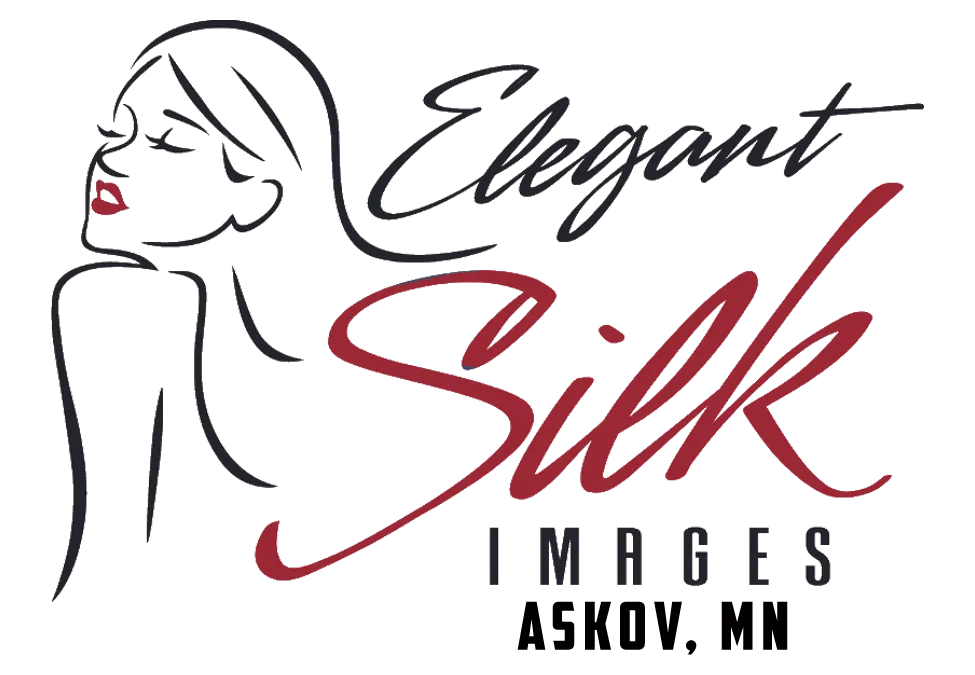FAQ:
How does Permanent Jewelry work?
Permanent Jewelry is applied with a welding machine which is specifically created for fragile metals. After the client has been sized for the appropriate amount of slack, the spark welds together a jump ring that replaces the need for a clasp (clasp-less jewelry).
Does it hurt?
Nope! The spark that is generated during this process is NOT of high temperature, and the customer will not feel a thing as we are working with the metal. There is absolutely no risk to the customer since the machine will only react to metal. Even if the customer's skin comes into contact with the weld point, the electrode will not generate a spark.
Can it be removed?
The chains applied during this process are thin enough to last but not thick enough to cause harm to the wearer in the event that it becomes caught on an object. If the jewelry needs to be removed for any reason, simply snip with a pair of scissors at the jump ring and it can always be re-welded.
When can it be worn?
TSA - Travelers are permitted to wear real jewelry through airport security without issue. SURGERY & MRI - There are situations where the jewelry may need to be removed for a medical procedure or MRI. In this event, the jewelry can be re-welded as long as it is properly removed. Cut the chain off at the jump ring and I will re-weld.
Will it last forever?
While Permanent Jewelry will stand the test of time and is designed for everyday wear, it is not invincible. It is still FINE jewelry. If it breaks at the weld site, bring it back for a re-weld by appointment. Book here: https://www.elegantsilkimages.com/permanent-jewelry If it breaks due to getting caught on something, I will offer a discount on a new bracelet or we can add another jump ring and weld it back together.
Does the jewelry require any special cleaning?
Daily: Gently clean your jewelry with a soft, dry cloth to remove oils and residue. To maintain the integrity of the chain, clean with soap and water often, you can also brush and mild soap and water to clean your jewelry, white toothpaste works too. Rinse thoroughly to avoid soap residue. You can also use a jewelry polishing cloth to help restore shine. If the sterling silver starts to tarnish, use sterling silver cleaner.
Things to avoid while wearing permanent jewelry:
Don't pull or stretch the jewelry. Try to avoid catching it on clothing or other items. Don't attempt to adjust or reshape the piece yourself. Keep away from harsh cleaning products without protecting the jewelry. During high-intensity activities, consider using an athletic tape or band to protect the piece. Avoid excessive exposure to chlorine, salt water, and harsh chemicals. Rinse with fresh water after swimming and dry thoroughly.


Permanent Jewelry Aftercare
Clean gently and regularly:
Use a soft, lint-free cloth to wipe the jewelry daily to remove oils and dirt
For deeper cleaning, use warm water and mild soap, gently wiping with a soft cloth, dry thoroughly
Avoid harsh chemicals, including chlorine and strong cleaning solutions
Avoid prolonged exposure to chemicals in pools and hot tubs
Protect from damage:
Remove or cover the jewelry when applying lotions, perfumes, or other beauty products
Be mindful during activities that could cause impact or snagging
Consider temporarily taping over the jewelry during intense physical activities
Maintenance tips:
Check the welded/soldered point periodically for any signs of weakness
If you notice any issues with the connection point, contact us promptly
For gold pieces, be aware that softer gold (like 14k or 18k) can scratch more easily
Jewelry may stretch over time due to heat and lifestyle, please let me know if you need it tightened
Sweat and your natural body oils and the pH of your skin can cause jewelry to tarnish over time.
As always, email us if you have any questions: [email protected]
Free welds available for the lifetime of chains received from me!
Easily remove the chain by cutting at the weld site with scissors or wire cutters.
We are not responsible for broken/lost chains or allergic reactions.

